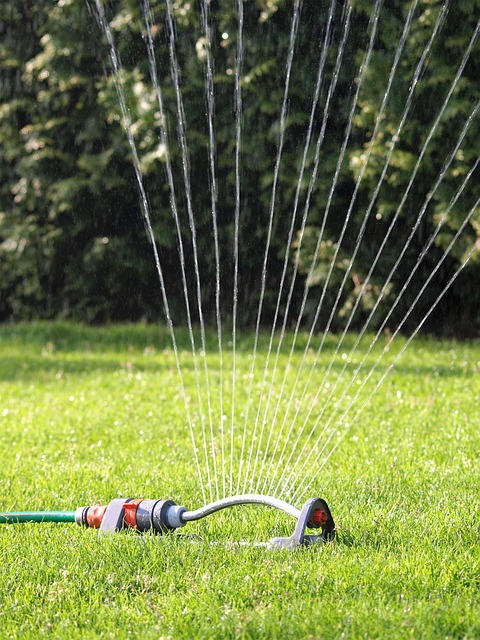Proper Lawn Care and Landscaping require strategic planning, balancing aesthetics with function. Understanding client needs, physical property characteristics, and intended uses is crucial. Incorporating seasonal variations in design, selecting suitable plants for microclimates, and integrating functional elements enhance outdoor spaces' appeal and practicality. Defining lifestyle requirements ensures a harmonious landscape that complements daily routines, increases property value, and requires ongoing lawn care maintenance.
“Transform your outdoor space into a thriving oasis with expert landscaping design guidance. From initial planning to final execution, this comprehensive guide unveils the secrets to creating a stunning landscape that harmonizes beauty and functionality. Learn the art of understanding your environment, tailoring designs to personal needs, and implementing effective lawn care practices. Discover how to enhance your yard with hardscaping elements, water features, and strategic plant choices, ensuring a vibrant, low-maintenance outdoor retreat. Master the balance between aesthetics and practicality through proven landscaping techniques, tailored for both beginners and seasoned gardeners, focusing on optimal lawn care and overall landscape enhancement.”
- Planning and Design Principles for Landscaping
- – Understanding the Landscape
- – Defining Your Lifestyle and Needs
Planning and Design Principles for Landscaping

When it comes to landscaping design, proper planning is key to creating an aesthetically pleasing and functional outdoor space. The initial phase involves understanding the client’s needs, preferences, and goals for their lawn care and landscaping. This may include discussing desired features such as gardens, patios, or water elements, as well as practical considerations like shade, privacy, and maintenance requirements.
Design principles play a crucial role in transforming a blank canvas into a harmonious outdoor environment. Balancing form and function, consideration of scale and proportion, and incorporating elements that create visual interest are essential. Utilizing natural features of the site, such as existing trees or body of water, can enhance the design while promoting ecological balance. Incorporating various textures, colors, and plant varieties from different seasons ensures year-round appeal in lawn care and landscaping projects.
– Understanding the Landscape

Before diving into landscaping design and implementation, it’s crucial to understand the landscape itself, encompassing both the physical features of a property and the needs of its owners. This involves assessing factors like terrain, climate, and existing vegetation. For instance, a property with a hilly terrain requires different lawn care and landscaping strategies compared to a level lot. Similarly, understanding the microclimates within a yard—shaded areas, sunny spots, and wind patterns—helps in selecting suitable plants that thrive under specific conditions.
Effective landscape design also means considering how outdoor spaces will be used. Are these areas for relaxation, entertainment, or gardening? Integrating functional elements like patios, decks, and garden beds with aesthetically pleasing features such as manicured lawns, flower beds, and water features creates a balanced and harmonious environment. Moreover, lawn care plays a vital role in maintaining the health and beauty of these spaces, ensuring that the landscape remains vibrant and inviting throughout the year.
– Defining Your Lifestyle and Needs

Defining your lifestyle and needs is a crucial step in landscaping design, as it ensures your outdoor space aligns perfectly with your daily routines and preferences. Consider how you intend to use your lawn and garden areas—whether it’s for quiet relaxation, entertaining guests, or active play. This understanding will guide choices on elements like seating arrangements, plant selection, and hardscaping features. For instance, if you enjoy hosting gatherings, a spacious patio with a built-in grill might be ideal, complemented by well-lit pathways and a neatly trimmed lawn for a welcoming ambiance.
When planning your landscaping, keep in mind factors such as privacy, sun exposure, and accessibility. Perhaps you desire a secluded retreat with tall fences and shaded areas or a low-maintenance yard with drought-resistant plants. Integrating these considerations into your design will result in a functional and aesthetically pleasing landscape that enhances your lifestyle and contributes to the overall value of your property—a significant aspect of effective lawn care and landscaping.
Incorporating thoughtful landscaping design into your outdoor space transforms it from a mere expanse of earth into a harmonious blend of aesthetics and functionality. By understanding your landscape, aligning it with your lifestyle and needs, and adopting effective planning principles, you can create a vibrant and low-maintenance lawn that reflects your personal style. Remember, successful landscaping is not just about visual appeal but also about creating a space that invites relaxation, entertainment, and enjoyment for years to come, making it an invaluable investment in your property’s value and your quality of life.




